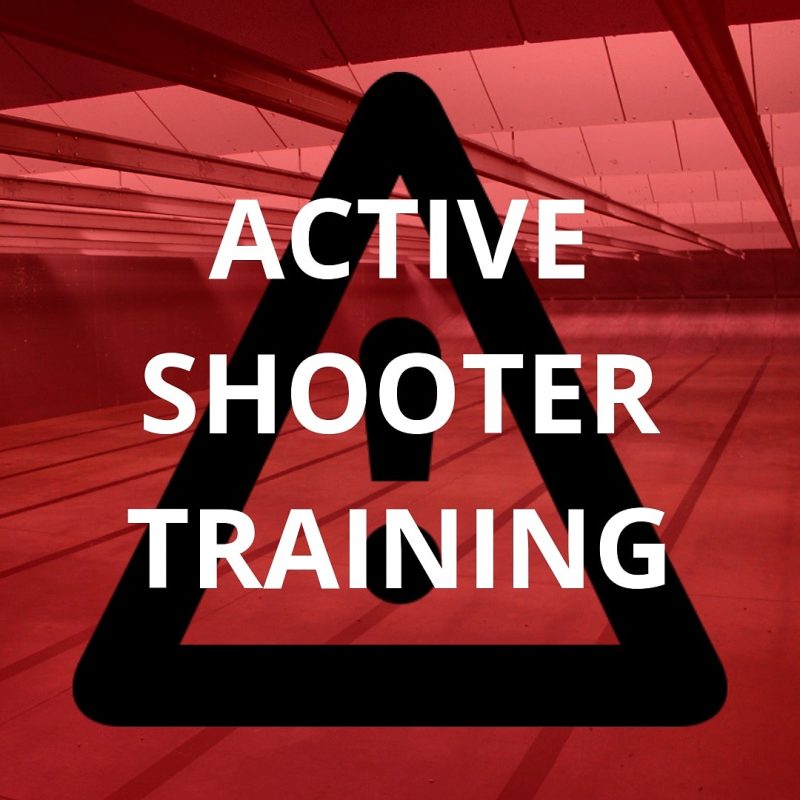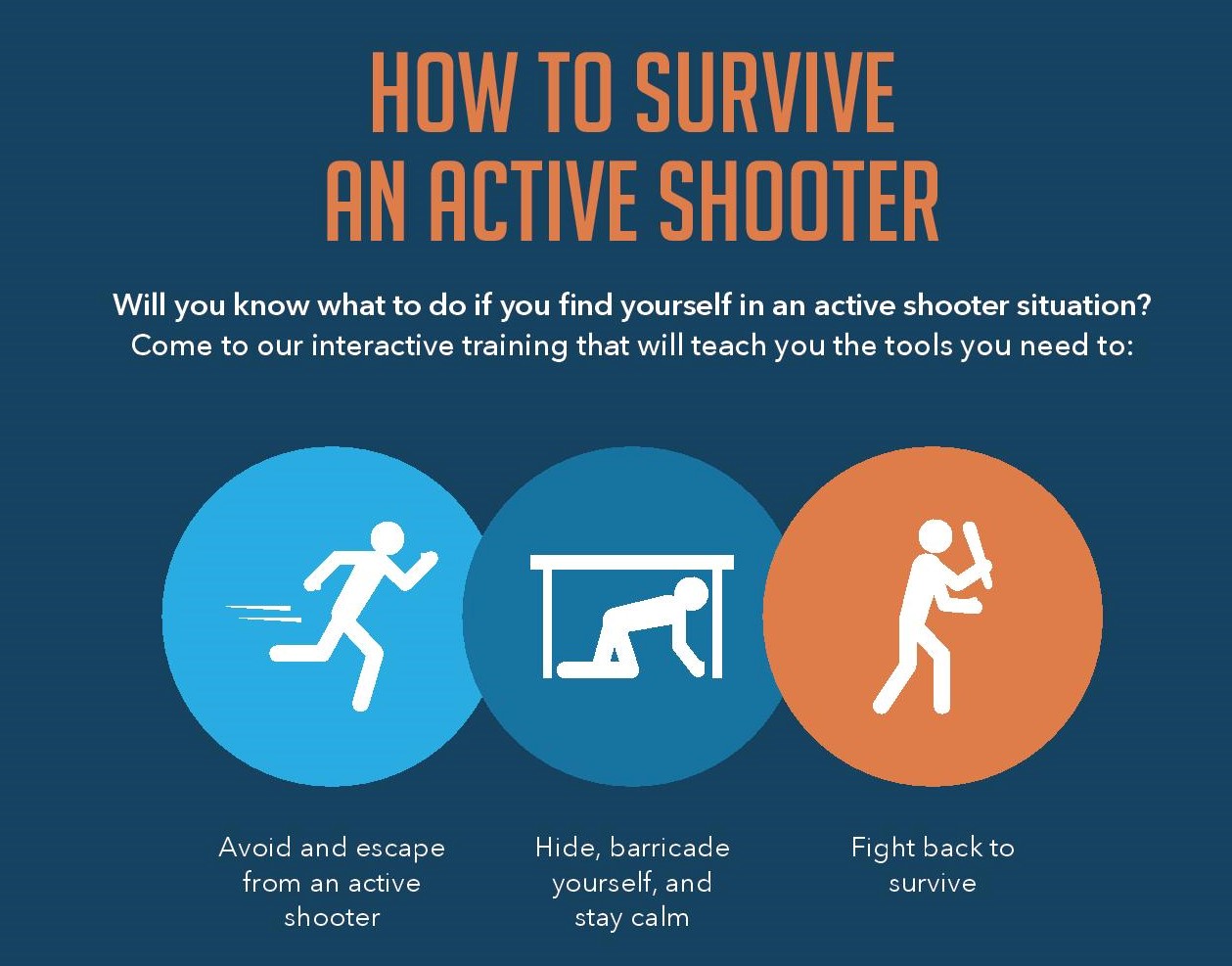Comprehensive Active Shooter Training Programs for Schools and Workplaces
Comprehensive Active Shooter Training Programs for Schools and Workplaces
Blog Article
Carrying Out Energetic Shooter Training: Finest Practices for Developing a Safe and Prepared Community Setting
As areas face the distressing reality of active shooter cases, the implementation of extensive training programs ends up being vital. An effective approach depends upon not only the advancement of tailored curricula that deal with regional dangers yet additionally the participation of varied stakeholders. By using a selection of training approaches, areas can ensure that all members are geared up with necessary abilities. The challenge lies in preserving an adaptive framework that evolves with emerging hazards. What are the vital aspects that can transform a conventional training program into a robust model for area durability?

Comprehending the Need for Educating
In a period noted by enhancing occurrences of physical violence in public areas, comprehending the requirement for active shooter training has never been extra essential. Comprehensive training campaigns can furnish participants with the knowledge and skills to respond decisively.
Training promotes a sense of empowerment and preparedness, making it possible for individuals to really feel more protected in their surroundings. The benefits of energetic shooter training expand past instant response; they consist of boosting communication protocols and enhancing total safety and security measures within organizations.
Key Components of Effective Programs
Effective energetic shooter training programs include numerous vital parts that improve preparedness and reaction abilities. First, comprehensive curriculum advancement is necessary, guaranteeing that training material is appropriate, evidence-based, and tailored to the specific needs of the company or neighborhood. This consists of comprehending the dynamics of active shooter cases and the psychological influence on people involved.
Second, practical training situations ought to be utilized to simulate possible circumstances, permitting participants to practice decision-making and feedback strategies in a controlled atmosphere. These drills promote muscle memory and develop self-confidence among participants.
Third, an emphasis on interaction methods is vital. Developing clear lines of communication among police, emergency situation -responders, and participants guarantees worked with reactions throughout an occurrence. Normal updates and correspondence course assist maintain interaction paths clear and reliable.
4th, recurring evaluation and feedback mechanisms should be integrated into the training program - active shooter training. Evaluating the efficiency of training with participant feedback and performance metrics allows for continuous improvement
Last but not least, cultivating a culture of safety and security and preparedness within the neighborhood urges watchfulness and aggressive actions, guaranteeing that individuals are not only trained but additionally participated in keeping a safe atmosphere.
Engaging Neighborhood Stakeholders

To effectively involve these stakeholders, it is necessary to connect the goals and advantages of the training. Holding educational sessions can my explanation help make clear the training's purpose, address problems, and outline the functions each stakeholder may play. Developing a stakeholder consultatory committee can assist in recurring dialogue, permitting for varied viewpoints and insights to be incorporated into the training program.
Structure relationships with community leaders and companies is also critical. Their support can boost outreach efforts, boost participation, and guarantee that training is customized to the unique demands of the community. Furthermore, stakeholders can aid in sharing info and sources, reinforcing the message of safety and preparedness.
Ultimately, involving neighborhood stakeholders not only strengthens the training initiative yet additionally grows a feeling of possession amongst residents, resulting in a much more durable and educated neighborhood qualified of responding successfully to prospective risks.
Training Delivery Approaches
Using a range of training delivery approaches is important to suit the diverse learning styles and demands of participants in active shooter training programs (active shooter training). Reliable training can take a number of forms, consisting of lectures, hands-on simulations, online components, and interactive workshops. Each technique serves an unique objective and can improve the overall understanding experience

On-line modules supply versatility and ease of access, enabling participants to discover at their very own rate. These can include videos, quizzes, and conversations to determine understanding. Interactive workshops encourage seminar and analytic, advertising teamwork and communication skills.
Integrating a blended technique that incorporates these techniques not just enriches the training experience however additionally guarantees that participants are better prepared to react successfully in case of an active shooter situation (active shooter training). By dealing with numerous learning choices, organizations can produce here are the findings a much more informed and look at this now receptive community
Continuous Assessment and Improvement
Regular analysis and enhancement of energetic shooter training programs are essential to preserving their significance and efficiency. As dangers advance, so must the approaches and methods employed in training. Continual assessment makes certain that training web content mirrors the most recent knowledge on energetic shooter cases, integrating lessons gained from recent occasions and changing for emerging trends.
To promote this procedure, organizations should establish feedback systems that consist of participant assessments, specialist reviews, and case debriefs. Gathering information on participant performance throughout drills and workouts is essential, as it highlights areas needing enhancement and notifies future training sessions. In addition, involving with regulation enforcement and emergency situation responders can give useful understandings into the functionality and applicability of training protocols.
Routinely scheduled testimonials of training materials and methods should be mandated, cultivating a setting of development and flexibility. Organizations needs to also encourage a society of continuous knowing, where personnel feel empowered to suggest adjustments based upon their experiences. By devoting to continual examination and renovation, organizations not just enhance the performance of their active shooter training programs however additionally strengthen their total commitment to security and readiness within the neighborhood.
Final Thought
In verdict, reliable execution of energetic shooter training requires a detailed method that prioritizes neighborhood interaction and practical simulations. Inevitably, a commitment to continuous training and improvement cultivates a society of alertness and readiness, guaranteeing a safer setting for all community participants.
Report this page